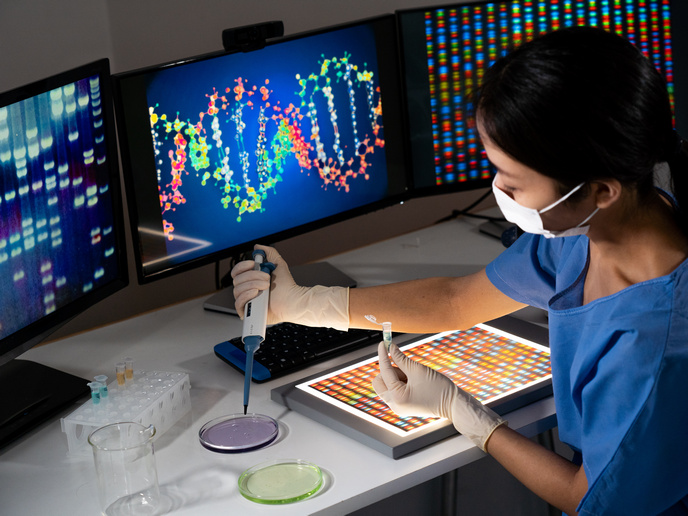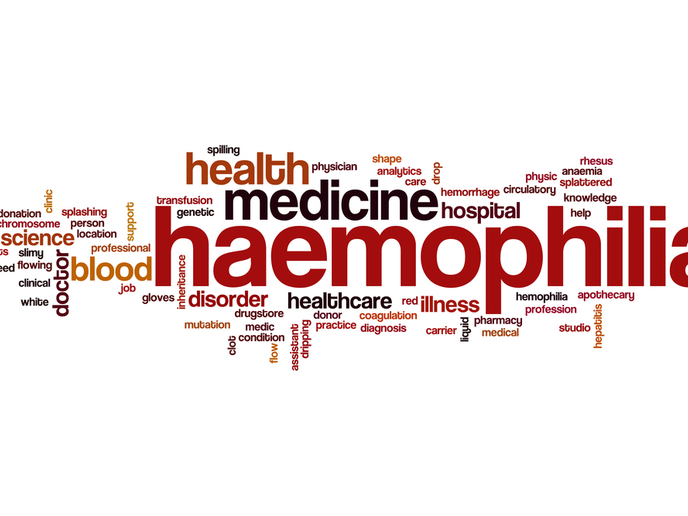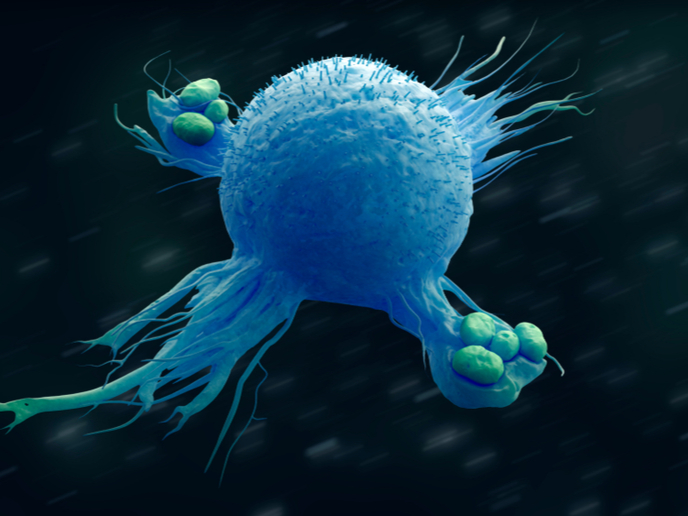Gene therapy advances create new treatment possibilities
Gene therapy(opens in new window) is one of the most promising treatment options for conditions such as genetic disorders and cancer. It involves transferring genetic material into a targeted cell to replace or inactivate a disease-causing gene; or introduce modified genes to help treat a specific disease. This research field is still relatively new however, and many challenges remain. For example, most therapeutic genes transported to cells accumulate inside cellular compartments called endosomes(opens in new window), where they are broken down and degraded. “A normal functioning cell breaks down everything it internalises,” explains Hendrik Fuchs, ENDOSCAPE(opens in new window) project coordinator from the Charité – University Hospital Berlin(opens in new window) in Germany. “But if you are introducing a therapeutic gene into the cell, you want to bring it in whole.”
Growing endosomal escape-enhancing molecules
Finding ways of enabling inserted genes to ‘escape’ from these endosomes – and ensuring the delivery of safe, targeted gene therapies to patients – were the key aims of ENDOSCAPE. For this, the project team turned to endosomal escape-enhancing molecules, which had been identified and isolated from plant roots several years before. The project recognised the potential of combining these molecules to deliver targeted and effective gene therapies. Parts of the project were dedicated to identifying the ideal conditions for ‘growing’ these molecules, producing the molecules in the lab and creating a reliable supply chain.
Molecular scaffolds to deliver gene therapy
These endosomal escape-enhancing molecules were then incorporated into molecular ‘scaffolds’. “DNA degrades if you inject it directly into the body, which is why you need to protect it,” adds Fuchs. “In this project, we achieved this with positively charged molecules that surround the negatively charged DNA.” The ENDOSCAPE project identified new substances with which to build these scaffolds. These were also capable of carrying the endosomal escape enhancer and the targeting molecules, or ligands. “The idea was to have everything bound in one molecule,” says Fuchs. The project team recognised that including endosomal escape enhancers in the delivery molecule made it possible to significantly reduce the dosage of active compounds, because far less active compounds were being degraded by the target cell. This could reduce the chances of patients having adverse effects from the medicine further down the line. A persistent challenge however was ensuring that these scaffolds – uniting all these molecules – could be wholly incorporated by cells. “There is a limitation to the size of particles that cells can take up,” explains Fuchs. “While we have shown that the therapeutic system we developed works in principle, the issue of targeted delivery still needs to be fully addressed. It will still be several years before we see this in clinics.”
A pioneer in cutting-edge medical techniques
At present, the only available clinical option is to use viruses to deliver genes. This procedure is expensive – a single treatment can cost millions of euro – and very often, only one treatment attempt can be made, because the patient’s immune system immunises them against future treatments. “This is why safe and effective non-viral-based treatments have such potential to reduce healthcare costs and bring benefits to a larger pool of patients,” says Fuchs. The advances made through the ENDOSCAPE project will help ensure that the EU is a pioneer in the development of these techniques.







